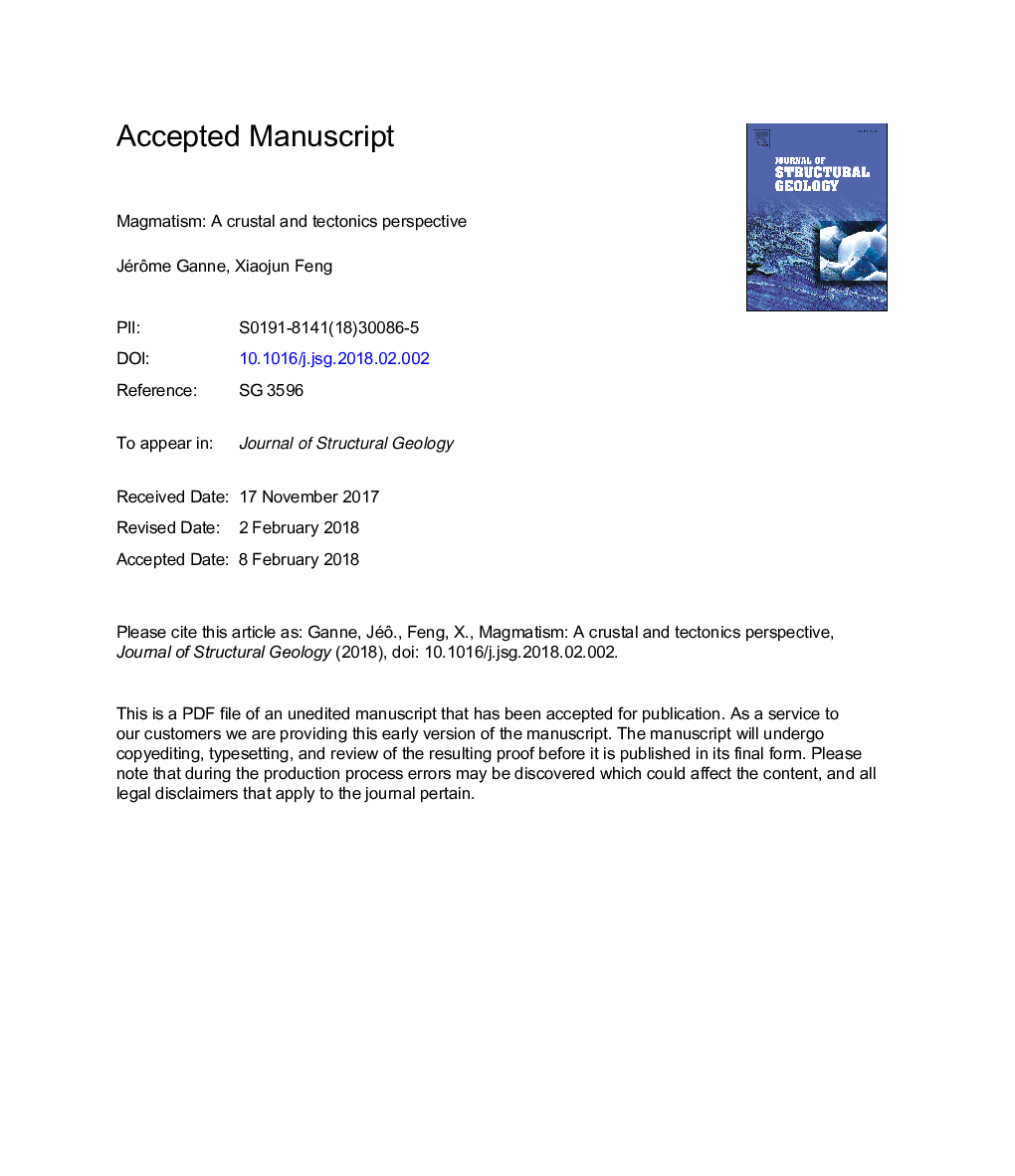| Article ID | Journal | Published Year | Pages | File Type |
|---|---|---|---|---|
| 10120766 | Journal of Structural Geology | 2018 | 27 Pages |
Abstract
The Earth's continental crust constitutes a major interface between the inner and outer envelops of the planet, controlling the differentiation of magmas produced in the mantle and their transfer to the surface. This close link facilitates the use of different chemical proxies to qualitatively unravel the crustal thickness related to fossil magmatic systems based on the message carried by magmas. This paper aims to bridge different results of statistical petrology, recently obtained at different scales of observation, in a global geodynamic model. Statistical analyses applied to a large multidimensional database of magmatic rocks show that crustal thickness could actually exert a first-order control on the composition of magmas, which become more calc-alkaline and comparatively less tholeiitic with increasing crustal thickness. Using this correlation, we document the progressive build-up of a thick (>40â¯km) Jurassic to Cretaceous accretionary belt along the Circum-Pacific Orogenic Belts (CPOB) that bounded the Panthalassa Ocean. The destruction of this thick belt started at ca. 125 Ma and was initially recorded by the thinnest magmatic systems hosting amphibole-bearing magma. Thinning of the CPOB became widespread in the northern regions of western America and in the western Pacific after ca. 75 Ma, possibly in response to oceanic plate segmentation, which triggered slab rollback and overriding plate extension. This chemical evolution is superimposed on a more global evolution of magma controlled by the temperature of the mantle that has gradually decreased since 200 Ma. Although the relative contribution of crust vs mantle cooling in the chemical signature of magmatic rocks should be further explored in the future, our results offer a new global perspective of the magmatic history of Pangea, the last supercontinent.
Keywords
Related Topics
Physical Sciences and Engineering
Earth and Planetary Sciences
Geology
Authors
Jérôme Ganne, Xiaojun Feng,
